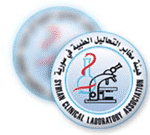| المجلد 6 ,
العدد 5
, جمادى الأولى 1433 - نيسان (أبريل) 2012 |
| |
| دراسة تلوث الخضار والثمار العشبية بالأحياء الدقيقة الممرضة والشائعة في مدينة دمشق وريفها |
| Study of Contamination of Leafy Vegetables and Herbal Fruits by Common Pathogenic Microorganisms in Damascus
and its Country |
| محمد الحلو، أ.د عبدو عطايا، أ.د اميل شاهين |
| Alholo M; Ataya A. and Chahine E. |
كلية الصيدلة، جامعة دمشق
Faculty of Pharmacy, Damascus University. |
| الملخص Abstract |
| الهدف: تحمل الخضار والفواكه، خاصة تلك التي تؤكل نيئة، بعض الاختطار على الصحة بسبب التعرض لملوثات كيميائية وحيوية شتى. ولقد ازدادت مؤخراً أمراض التسمم الغذائي ويعود ذلك إلى عاملين:
الأول: شح الأمطار الذي سبب تزايداً في استخدام ماء الصرف الصحي في الإِرْواء.
الثاني: ازدياد الإقبال على الوجبات غير المفيدة التي تدخل الخضار في تركيبها.
ركزت دراستنا على تلوث الخضار الورقية والثمار العشبية بالجراثيم والطفيليات الممرضة. ومقارنة فعالية بعض المطهرات.
الطرق: فُحصت العينات بالمجهر بحثاً عن الطفيليات وبعتيدة Food- System بحثاً عن الجراثيم وهي تعتمد على التفاعلات الكيميائية الحيوية.
النتائج: وجدنا أن التلوث بالطفيليات منخفض (10?)، لكن الجَراثيم كانت موجودة في العينات جميعها، وكان التلوث بالجراثيم التي يحظر وجودها (كالسَّلْمونيلَة والعصيات القولونية) مرتفعاً.
درسنا القدرة المطهرة للصابون و برمنغنات البوتاسيوم 0.1? و حَمْضُ السِّتريك (الليمون) 5?. فوجدنا أن القدرة المطهرة للصابون وبرمنغنات البوتاسيوم 0.1? كانت منخفضة، لكن لم نكشف أي من الجراثيم التي تكشفها العتيدة بعد تطبيق السِّتريك (الليمون) 5?.
|
| |
| Objective: Fruits and vegetables -especially that can be eaten raw- have some risk on health due to exposure to many chemical and microbiological contaminants. Recently, food-poisoning illnesses have increased due to two factors:
First, decrease of rain that causes increase of usage of sewage water in irrigation.
Second, increase of consumption of junk food that is composed of vegetables.
Our study focused on the contamination of leafy vegetables and herbal fruits by pathogenic bacteria and parasites, and comparison between capacities of some sanitizers.
Methods: the samples were tested by microscope for parasites and by Food- System kit for bacteria which depend on biochemical reactions.
Results: We found that the contamination by parasites was low (10 percent), but the bacteria were found in all samples, and the contamination by unacceptable bacteria (as salmonella and E. coli) was high.
We studied the sanitizing capacity of soap, potassium permanganate 0.1% and citric acid 5%. We found that the sanitizing capacity of soap and potassium permanganate 0.1% was low, but we do not detect any bacteria from those could be detected by the kit after the application of citric acid 5%.
|
| |
| |
| المجلد 6 ,
العدد 5
, جمادى الأولى 1433 - نيسان (أبريل) 2012 |
|
|
|
